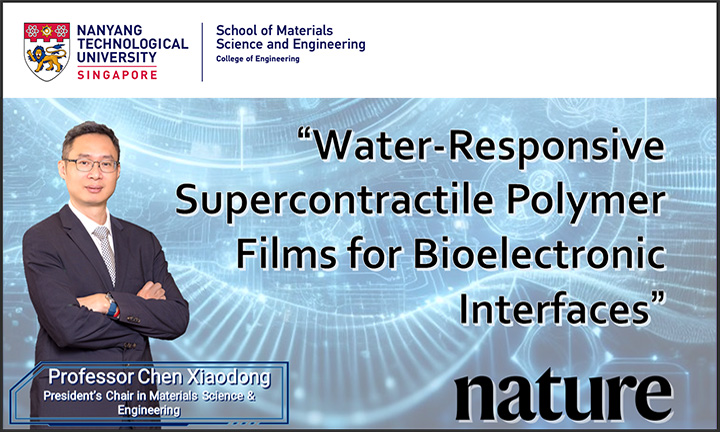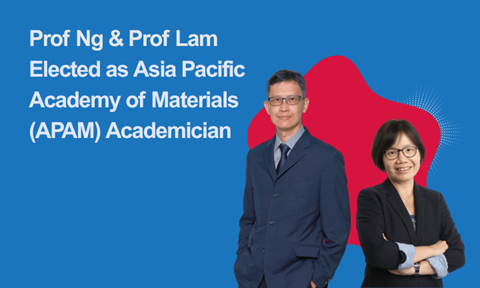Nature Paper - Professor Chen Xiaodong
We are pleased to share that Professor Chen Xiaodong’s recent research article, titled "Water-responsive supercontractile polymer films for bioelectronic interfaces", has been published in Nature.


Abstract
Connecting different electronic devices is usually straightforward because they have paired, standardized interfaces, in which the shapes and sizes match each other perfectly. Tissue–electronics interfaces, however, cannot be standardized, because tissues are soft1,2,3 and have arbitrary shapes and sizes4,5,6. Shape-adaptive wrapping and covering around irregularly sized and shaped objects have been achieved using heat-shrink films because they can contract largely and rapidly when heated7. However, these materials are unsuitable for biological applications because they are usually much harder than tissues and contract at temperatures higher than 90 °C (refs. 8,9). Therefore, it is challenging to prepare stimuli-responsive films with large and rapid contractions for which the stimuli and mechanical properties are compatible with vulnerable tissues and electronic integration processes. Here, inspired by spider silk10,11,12, we designed water-responsive supercontractile polymer films composed of poly(ethylene oxide) and poly(ethylene glycol)-α-cyclodextrin inclusion complex, which are initially dry, flexible and stable under ambient conditions, contract by more than 50% of their original length within seconds (about 30% per second) after wetting and become soft (about 100 kPa) and stretchable (around 600%) hydrogel thin films thereafter. This supercontraction is attributed to the aligned microporous hierarchical structures of the films, which also facilitate electronic integration. We used this film to fabricate shape-adaptive electrode arrays that simplify the implantation procedure through supercontraction and conformally wrap around nerves, muscles and hearts of different sizes when wetted for in vivo nerve stimulation and electrophysiological signal recording. This study demonstrates that this water-responsive material can play an important part in shaping the next-generation tissue–electronics interfaces as well as broadening the biomedical application of shape-adaptive materials.
The article can be found via this link: https://www.nature.com/articles/s41586-023-06732-y
A summary of the article is also available here: https://www.nature.com/articles/d41586-023-03653-8
About the journal
Nature is a weekly international journal publishing the finest peer-reviewed research in all fields of science and technology on the basis of its originality, importance, interdisciplinary interest, timeliness, accessibility, elegance and surprising conclusions. Nature also provides rapid, authoritative, insightful and arresting news and interpretation of topical and coming trends affecting science, scientists and the wider public.
Our heartiest congratulations to Professor Chen and team on their excellent achievement!





-officer-awards-2025.tmb-listing.png?Culture=en&sfvrsn=1790ff83_1)

